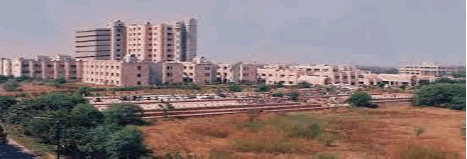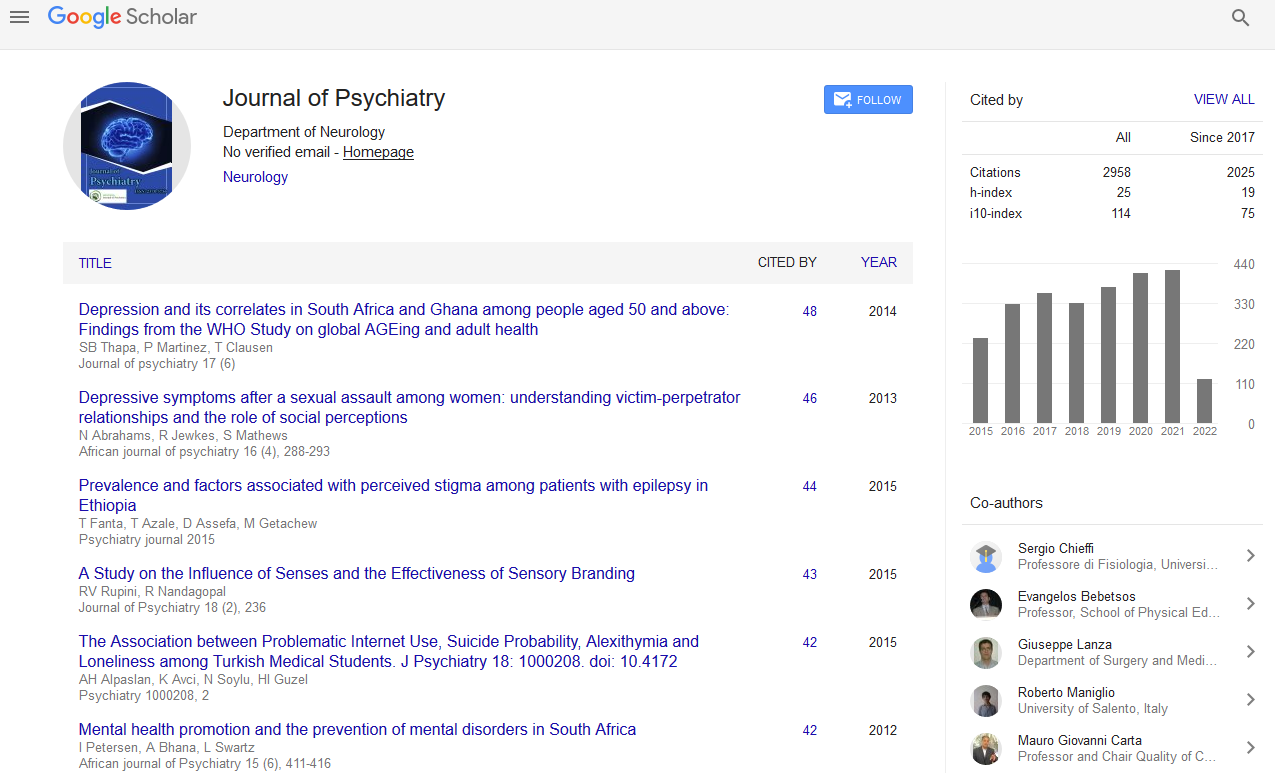PMC/PubMed Indexed Articles
Indexed In
- RefSeek
- Hamdard University
- EBSCO A-Z
- OCLC- WorldCat
- SWB online catalog
- Publons
- International committee of medical journals editors (ICMJE)
- Geneva Foundation for Medical Education and Research
Useful Links
Share This Page
Open Access Journals
- Agri and Aquaculture
- Biochemistry
- Bioinformatics & Systems Biology
- Business & Management
- Chemistry
- Clinical Sciences
- Engineering
- Food & Nutrition
- General Science
- Genetics & Molecular Biology
- Immunology & Microbiology
- Medical Sciences
- Neuroscience & Psychology
- Nursing & Health Care
- Pharmaceutical Sciences
Value Added Abstract - (2020) Volume 0, Issue 0
Concomitant Rigidity in Stroke Affected Spastic Limbs and its Amenability to Dopaminergic Therapy in Post Stroke Rehabilitation
Ananya DasPublished: 16-Sep-2020
Abstract
Background: Several stroke patients remain disabled due to severe stiffness in the affected hemiparetic limbs despite adequate therapeutic measures. This disability limits activities of daily living and social participation in about half of the stroke survivors. We therefore, looked at any cause of stiffness (other than spasticity) in the affected limbs and any benefit of additional therapeutic measure based on the associated cause. In cerebrovascular diseases, it is possible that the presence of rigidity in the paralysed half of the body may aggravate the stiffness caused by corticospinal tract involvement in some of the stroke survivors.
Materials and Methods: We did a prospective parallel quasi-randomized intervention trial in a tertiary care hospital of Northern India. Patients >18 years of age with ischemic/hemorrhagic stroke and concomitant cogwheel rigidity in stroke affected limbs were enrolled in the study. Of eighty-nine patients included in the study, fifty-six received levodopa +carbidopa (100+25) mg combination thrice a day in combination with continuous assisted synchronized periodic (CASP) physiotherapy (Dopaminergic or DT group) while thirty-three received only CASP therapy (Non- dopaminergic or non-DT group).
Results: There was statistically significant improvement in cogwheel rigidity and Unified Parkinson Disease Rating Scale (UPDRS) score in DT group compared to non-DT group at 2,4 and 8 weeks (p<0.05). Spasticity improved significantly in both groups, probably as a result of good physiotherapy and anti-spastic drugs (p<0.001). Activities of Daily Living (ADL) and modified Rankin scale (mRS) scores however, showed significant improvement only in DT group across the timeline (p<0.001).
Conclusion: Concomitant cogwheel rigidity in addition to spasticity is a hitherto unknown but a significant cause of stiffness in stroke affected limbs in about one- fourth of the patient’s alleviation of which may contribute to ease of doing physiotherapy with a possible better outcome.

Biography:
Ananya Das have completed MD Pediatrics from Medical College, Kolkata. Thereafter I have done senior residency in All India Institute of Medical Sciences (AIIMS) in the Dept of Pediatrics. Now I am pursuing DM neurology in Sanjay Gandhi Post Graduate Institute of Medical Sciences (SGPGIMS). I have done my thesis work on post stroke rigidity.

Speaker Publications:
1. Pradhan Sunil, Das Animesh, Mulmuley Madhura & Das Ananya. (2020). “Neurocysticercosis or tuberculoma – Which one has more epileptic potential?” Seizure. 78. 10.1016/j.seizure.2020.03.007.
2. Pradhan Sunil, Deshmukh Anirudh, Bansal Robin & Das Ananya. (2018). “Hypertension: A Risk Factor for Stroke”. Hypertension Journal. 4. 31-35. 10.15713/ins.johtn.0101.
3. Ananya Das & Pradhan Sunil. (2018). “Change in the natural profile of Duchenne muscular dystrophy with the judicious use of steroids”. Neurology India. 66. 893-895. 10.4103/0028-3886.232304.
10th International Conference on Neurological disorders & Stroke; Webinar-August 21-22, 2020.
Abstract Citation:
Ananya Das, Concomitant rigidity in stroke affected spastic limbs and its amenability to dopaminergic therapy in post stroke rehabilitation, Stroke Congress 2020, 10th International Conference on Neurological disorders & Stroke
Webinar- August 21-22, 2020.


